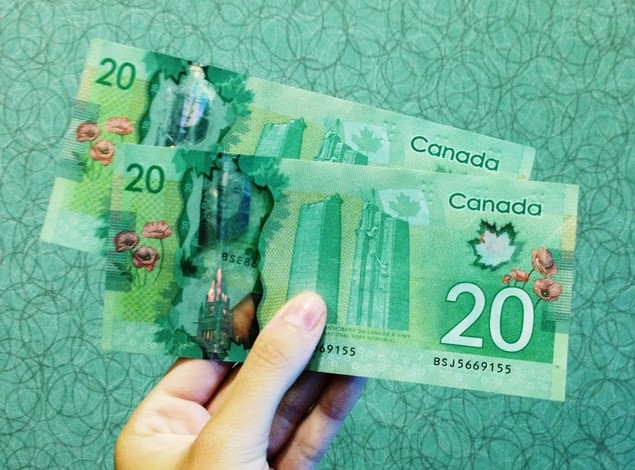Bank Of Canada Set To Tread Carefully With A 25bp Cut
The Bank of Canada is widely expected to cut rates on 29 January with a 25bp move looking as the most likely outcome amidst tepid growth, benign inflation and an unemployment rate that’s trending higher. US trade tensions present downside risks to growth and could force the BoC to cut deeper later this year. For now, CAD will anyway continue to respond almost only to Trump's tariff threat.

Photo by Michelle Spollen on Unsplash
Widespread expectations for a 25bp BoC rate cut
A 25bp interest rate cut from the Bank of Canada, leaving the overnight rate at 3%, is the widely held view in the market for next week’s BoC monetary policy decision meeting. Only one out of 15 analysts surveyed by Bloomberg expect the policy rate to be held at 3.25% with one person going for a 50bp cut and another going for a 75bp cut. We also expect a 25bp move after two consecutive 50bp cuts. This would bring the cumulative policy easing to 200bp since the early summer.
Economic activity has been disappointing with fourth quarter GDP expected to come in at an annualised 1.5% rate after 1% growth in the third quarter. At the same time the unemployment rate has been trending upwards to stand at 6.7% versus a 2022 low of 4.8%. This indicates excess supply in the economy that is helping to depress price pressures. Headline inflation is currently just 1.8% year-on-year with core (ex food and energy) measures at around 2.5%, although this has been helped by the temporary sales tax holiday on food, beverages, eating out, children’s clothing, games, toys and books. That said, the chart below implies the inflation and jobs dynamics justify additional support for the economy in an environment where business surveys point to ongoing subdued activity.
Canada inflation (YoY%) and unemployment rate (%)

Source: Macrobond, ING
Escalating trade tensions heightens the risks for Canada's economy
The meeting comes at a point when the Canadian economy is under more intense scrutiny now that President Trump is back in office. His threat of 25% tariffs on imports from Canada into the US from as soon as 1 February is causing significant concern for business leaders and politicians alike. The US is by far and away Canada’s most important trading partner, taking in 76% of Canada’s exports with the value equivalent to around 20% of Canadian GDP. The proposed tariffs will undoubtedly hurt the competitiveness of Canadian products with the clear risk that substitution away from Canadian-sourced items leads to an economic downturn.
There is the prospect that US importers try to front run tariffs and that boosts the very near-term Canadian export story. Meanwhile, the potential for retaliatory tariffs on US exports into Canada – around 65% of Canadian imports come from the US – may push up price levels for Canadian consumers and prompt faster inflation. The weakness of the Canadian dollar, which is down around 5% on a trade-weighted basis since September also adds to price pressures through higher imported prices. This is a key reason why we expect just a 25bp cut next week.
Until there is clarity on what is happening on the US-Canada trade policy front the BoC is likely to tread carefully. Nonetheless the risks to our view that the Bank for Canada policy rate bottoms at 2.75% appear to be skewed to the downside given the relatively subdued economic backdrop and the clear threat to growth and jobs from potential US trade tariffs.
CAD: All about tariffs
The Bank of Canada plays for now a secondary role for the loonie. Trump’s threat to impose 25% tariffs by 1 February is preventing CAD from rebounding as much as other tariff-sensitive currencies like EUR, AUD and NZD. That said, USD/CAD is down almost 1% since last Friday, and our assessment is that, at 1.440, it is well short of pricing in the full extent of the US tariff impact.
We currently estimate a 2% short-term overvaluation in USD/CAD, but one of the key variables in our fair value model is the short-term swap rate gap between the two currencies, which has plenty of room to widen further if the BoC cuts rates more aggressively to temper a North American trade war.
At this stage – and regardless of this January BoC 25bp cut – the loonie continues to face very binary outcomes. Should Trump scale back the tariff threat, then there is an approximate 2% downside room to cover for USD/CAD. Should tariffs be imposed in the near term, we expect a dovish repricing in BoC expectations to compound with a greater risk premium and take USD/CAD well above 1.45.
More By This Author:
Mixed Conditions In Manufacturing Soften Wage Growth In PolandFX Daily: Tentative Tariff Optimism Keeps Dollar Under Pressure
The Commodities Feed: Tariff Threat Weighs On The Complex



